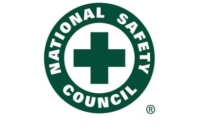Total Worker Health is an area of emerging importance for safety professionals in which ASSP has designated a task force. When done right, the benefits to business and to employees include lower risk, collaborative employee-employer engagements and fewer injuries, ASSP says. In short, TWH can lead to a more sustainable workforce. The task force gave an overview of TWH on Wednesday, offering an insider update on their work.
Speakers were Jim Thornton, Vice President of Professional Affairs at ASSP, Kimberly Olszewski, Bloomberg University, and Sharon Kemerer, chair of ASSP’s task force on Total Worker Health.
Total Worker Health is described as policies, programs and practices that integrate protection from work-related safety and health hazards with promotion of injury and illness prevention efforts to advance worker well-being. Officials stressed that this is not the same as promoting health. The key difference is that this initiative determines risk factors for certain things such as injuries, pain, job loss and stress.
In 2011, NIOSH renamed the term “worklife” to Total Worker health as it pertains to their “Steps to a healthier workforce.” ASSP launched their task force on the topic in 2018, and a study was conducted in 2019 among its 10,000 active members.
The results showed that 45 percent of those surveyed were not familiar with TWH, but 74 percent of respondents acknowledged they were looking for ways to learn more.
The survey respondents identified the four biggest challenges to employee safety, health and wellbeing as: leadership; changing workforce demographics; control of hazards/exposures; and organization of work.
Of those implementing TWH, 82 percent indicated that their organization is in the beginning or planning stages of implementation. Members want assessment tools, professional development and success stories/case studies.
The next steps involve increasing awareness of TWH and helping more organizations implement its principles.




